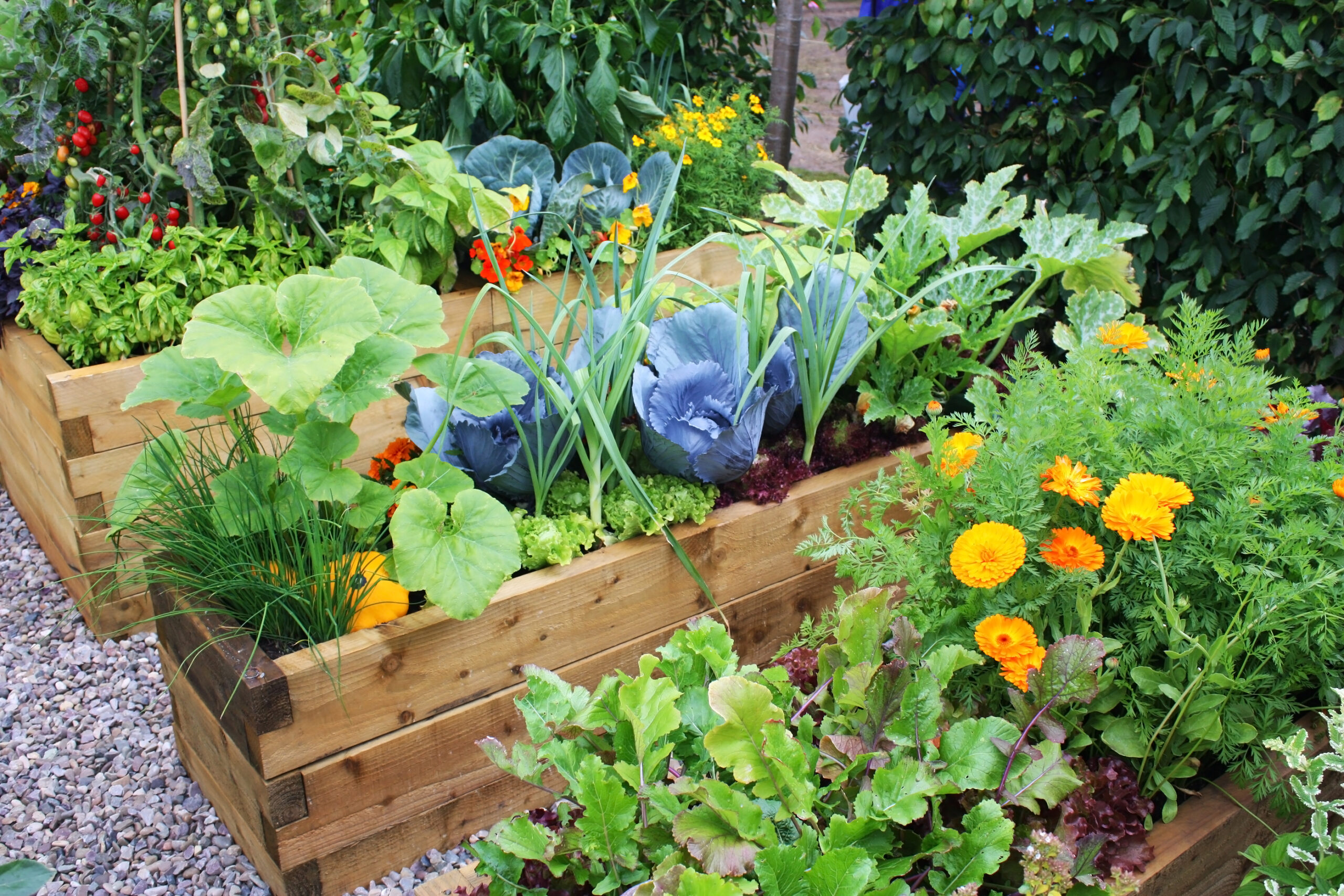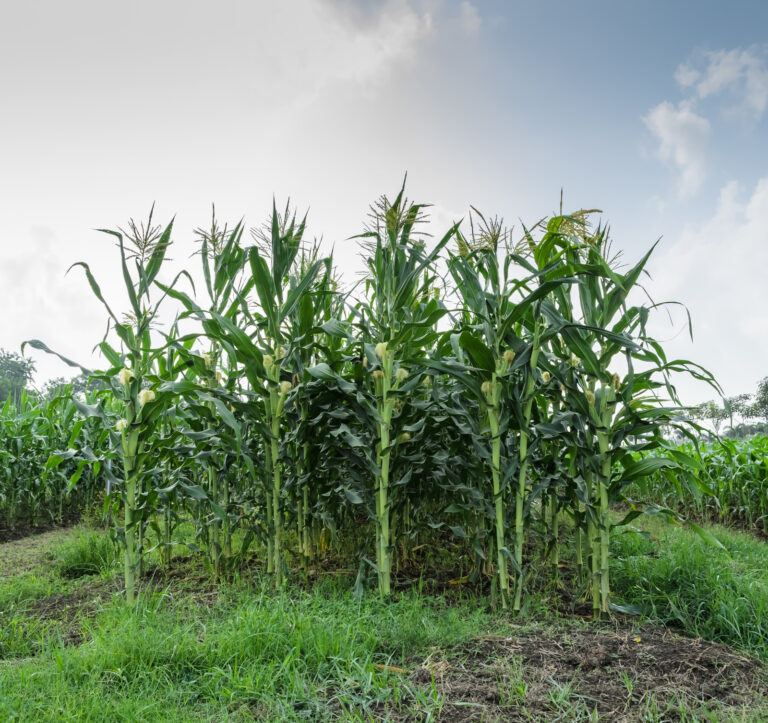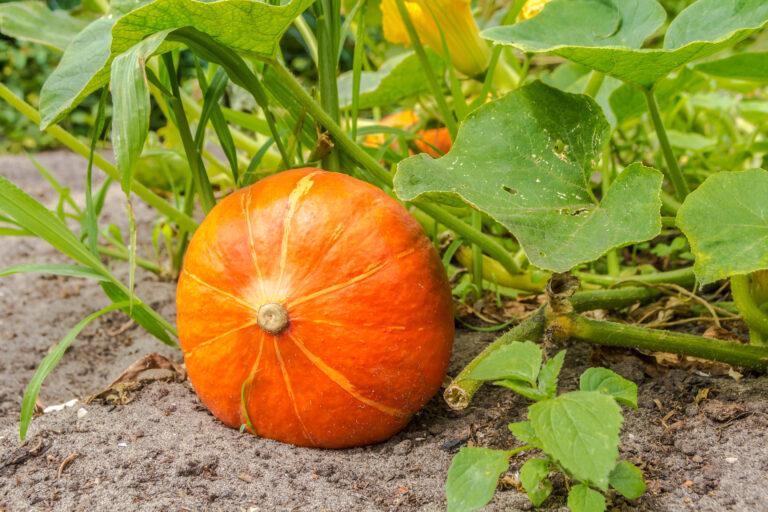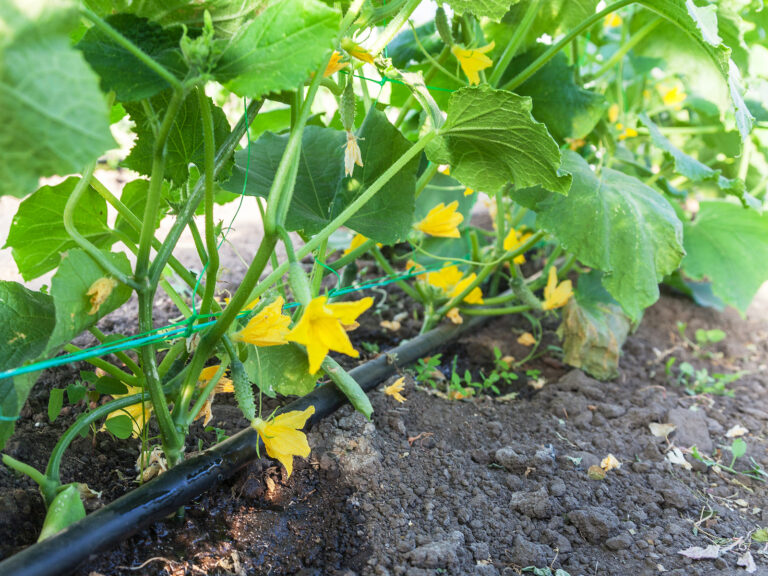Companion Planting Basics in a Vegetable Garden
Companion planting is the practice of strategically growing different plants close to each other in the garden to benefit one or both plants. It involves pairing plants that have complementary characteristics, such as natural pest repellence, soil enrichment, or improved growth. The concept relies on the natural relationships between plants and how they interact with each other, the soil, and the environment. By combining the right plants, gardeners can improve plant health, increase yields, reduce the need for chemical pesticides, and make the garden more biodiverse and resilient.
Companion planting can involve using plants that deter pests, attract beneficial insects, provide shade, or even improve soil fertility through nitrogen-fixing. Some plants can also act as “trap crops,” drawing pests away from more valuable crops. With proper planning and the right combinations, companion planting can create a thriving, self-sustaining vegetable garden.
How to Do Companion Planting
To successfully use companion planting in your vegetable garden, follow these steps:
- Know the Needs of Each Plant: Start by understanding the sunlight, water, and soil requirements of each vegetable. Pair plants with similar needs to avoid competition and ensure they grow well together.
- Use Beneficial Plant Pairings: Choose plant combinations known to be beneficial to each other, whether through pest control, soil improvement, or growth enhancement.
- Avoid Negative Plant Pairings: Some plants can inhibit the growth of others due to chemical interactions or competition for resources. Be aware of these “bad companions” and avoid planting them near each other.
- Plan for Plant Height and Spread: Taller plants can provide shade for sun-sensitive crops, while spreading plants can act as ground cover to retain moisture. Plan the layout accordingly.
- Rotate Companion Plants Each Season: Move plants around each year to prevent disease buildup and nutrient depletion in the soil.
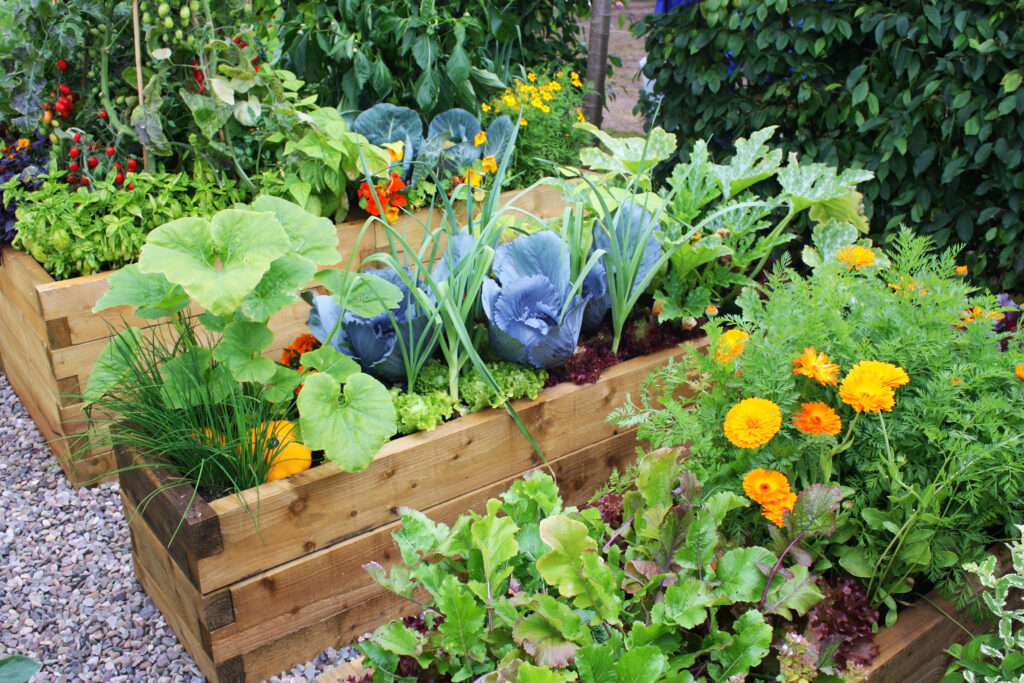
Examples of Companion Plants and Why They Are Companions
Here are some popular companion planting examples, including why these pairings work well in a vegetable garden:
1. Tomatoes and Basil
- Why They Are Companions: Basil is known to repel pests like aphids, whiteflies, and tomato hornworms that often target tomatoes. It also enhances the flavor of tomatoes when grown nearby. The strong aroma of basil confuses pests and makes it harder for them to locate tomato plants.
- How to Plant Them Together: Plant basil around the base of tomato plants, spacing the basil about 12-18 inches apart to allow room for both plants to grow.
2. Carrots and Onions
- Why They Are Companions: Carrots attract beneficial insects, such as predatory wasps, while onions help deter carrot flies with their pungent scent. The strong odor of onions masks the smell of carrots, reducing the likelihood of carrot fly infestations.
- How to Plant Them Together: Alternate rows of carrots and onions, or plant them in small clusters together, keeping about 3-4 inches of space between individual plants.
3. Corn, Beans, and Squash (The Three Sisters)
- Why They Are Companions: This traditional Native American planting technique involves growing corn, beans, and squash together. The corn provides a natural support for the beans to climb, the beans fix nitrogen in the soil to benefit all three plants, and the squash acts as a ground cover, suppressing weeds and retaining soil moisture. This trio creates a self-sustaining ecosystem in the garden.
- How to Plant Them Together: Plant the corn in a circle or square, spacing the plants about 12 inches apart. Once the corn is a few inches tall, plant beans around the corn, and add squash seeds in between the corn and beans.
4. Cabbage and Dill
- Why They Are Companions: Dill attracts beneficial insects, such as ladybugs and hoverflies, which prey on cabbage pests like aphids and cabbage worms. It also improves cabbage growth and flavor. However, dill should be harvested before it matures fully to prevent it from competing with the cabbage.
- How to Plant Them Together: Plant dill in the rows or beds surrounding cabbage. Thin dill seedlings to allow enough space for both crops to grow without overcrowding.
5. Lettuce and Radishes
- Why They Are Companions: Radishes grow quickly and can be harvested before lettuce reaches maturity, freeing up space for the lettuce to continue growing. Radishes can also help break up compacted soil, benefiting shallow-rooted lettuce plants. Additionally, radishes may deter pests like aphids and beetles from attacking lettuce.
- How to Plant Them Together: Interplant radishes and lettuce, spacing the radishes around 2 inches apart and lettuce about 6-8 inches apart. As the radishes are harvested, the lettuce will fill in the gaps.
6. Marigolds and Almost Any Vegetable
- Why They Are Companions: Marigolds produce a strong scent that deters many common garden pests, such as nematodes, aphids, and beetles. Their roots release substances that are toxic to certain nematodes, helping to protect the surrounding plants. Marigolds also attract pollinators to the garden.
- How to Plant Them Together: Plant marigolds around the perimeter of garden beds or intersperse them throughout the vegetable garden for natural pest control.
7. Peppers and Nasturtiums
- Why They Are Companions: Nasturtiums attract aphids away from pepper plants, acting as a trap crop. They also repel whiteflies and beetles while attracting beneficial insects that prey on garden pests.
- How to Plant Them Together: Plant nasturtiums near peppers or interplant them with the peppers to help protect against pests. Nasturtiums can be grown as a ground cover to keep soil moist and cool.
Benefits of Companion Planting
- Pest Control: Certain plants can repel harmful insects or attract beneficial predators that control pest populations.
- Improved Soil Health: Plants like beans and peas fix nitrogen in the soil, which can improve fertility for surrounding crops.
- Enhanced Growth: Some plant combinations improve each other’s growth and flavor. For example, basil is thought to enhance the flavor of tomatoes when grown nearby.
- Weed Suppression: Ground cover plants, such as squash, help block sunlight from reaching weed seeds, reducing their growth.
- Efficient Use of Space: By growing plants with different growth habits together, such as tall corn and low-growing squash, gardeners can maximize limited space.
Potential Pitfalls of Companion Planting
While companion planting has many benefits, it’s important to avoid pairing plants that compete for the same resources or have negative effects on each other. Some known examples of “bad companions” include:
- Fennel: It inhibits the growth of many other garden plants, making it a poor companion for most vegetables.
- Potatoes and Tomatoes: Both are susceptible to similar diseases, such as blight, which can spread rapidly if planted together.
The History of Companion Planting: Ancient Practice to Modern Science
Companion planting is an age-old gardening technique with roots in various agricultural traditions around the world. It involves growing different plants together to benefit one or both species, through natural pest control, enhanced growth, or improved soil health. While it is not a new concept, the history of companion planting spans thousands of years, with its origins in indigenous farming practices, ancient civilizations, and traditional agricultural methods.
Origins in Indigenous and Ancient Farming
The concept of companion planting can be traced back to ancient indigenous cultures, particularly in North America. One of the most well-known examples is the “Three Sisters” method practiced by Native American tribes. This technique involves planting corn, beans, and squash together: the corn serves as a support for the climbing beans, the beans enrich the soil with nitrogen, and the squash acts as a ground cover to suppress weeds and retain moisture. The Three Sisters method has been practiced for centuries and represents one of the earliest documented uses of companion planting for sustainable agriculture.
In ancient China, farmers also practiced a form of companion planting by growing soybeans with other crops to naturally fertilize the soil. Similarly, in ancient Roman agriculture, farmers grew herbs like rue and dill near crops to repel pests and attract beneficial insects. The concept of pairing plants for mutual benefit appears in many other ancient traditions, including those from Africa, Europe, and the Middle East.
Companion Planting in the Middle Ages and Beyond
In medieval Europe, companion planting was practiced in monastery gardens and small-scale peasant agriculture. Techniques included interplanting crops like garlic with roses to ward off pests or planting marigolds near vegetable gardens to deter insects. These methods were based on observations passed down through generations, rather than scientific understanding, but they nonetheless demonstrated the practical benefits of companion planting.
The 17th and 18th centuries saw further development in companion planting practices, often through trial and error. Colonial settlers in North America adopted Native American practices such as the Three Sisters to improve their crop yields. Over time, farmers experimented with various plant pairings, noting which combinations thrived together and which did not.
The Emergence of Scientific Understanding in the 20th Century
The early 20th century marked a shift towards a more scientific understanding of companion planting, with researchers starting to study plant interactions more systematically. Observations about allelopathy—the chemical interactions between different plants—provided some scientific basis for why certain companion planting strategies worked. For example, the release of chemicals from the roots of certain plants can inhibit or enhance the growth of neighboring plants.
The work of Sir Albert Howard, an agricultural scientist and one of the founders of the organic farming movement, also helped to popularize the use of natural, biodiverse approaches in agriculture, including companion planting. His research emphasized soil health, natural pest control, and the importance of working with nature rather than against it.
Is Companion Planting a Science?
While the principles of companion planting are rooted in traditional agricultural practices, the scientific basis for these techniques has only recently been explored in greater depth. The field of agroecology, which studies the ecological interactions within agricultural systems, has helped validate some of the claims about companion planting. Scientific research has found evidence supporting certain plant pairings for pest control, such as using marigolds to reduce nematode populations or growing beans with corn for nitrogen fixation.
However, not all aspects of companion planting are fully understood, and some combinations that work in one environment may not produce the same results in another. The effectiveness of companion planting can be influenced by factors such as local climate, soil conditions, and specific plant varieties. While some traditional pairings are supported by scientific evidence, others may rely more on anecdotal experience and folklore.
Companion Planting as Both Tradition and Science
Today, companion planting is considered a blend of traditional knowledge and emerging scientific understanding. As modern research continues to study the ecological relationships in gardening and farming, many traditional companion planting practices are being validated. Agroecologists and organic farmers continue to explore how plant diversity, natural pest control, and beneficial plant relationships can be used to create more sustainable agricultural systems.
Some scientific approaches to companion planting include:
- Allelopathy: The study of how certain plants release natural chemicals that can suppress or promote the growth of other plants.
- Polyculture: The practice of growing multiple crops in proximity, which increases biodiversity and can lead to more resilient agricultural systems.
- Trap Cropping: Planting crops that attract pests away from the main crop, helping reduce the need for chemical pesticides.
- Attracting Beneficial Insects: Using certain plants to attract pollinators and predatory insects that control pest populations.
The history of companion planting is a testament to the wisdom of ancient and traditional agricultural practices. It has evolved from simple observational techniques used by indigenous peoples and early farmers to a more complex field incorporating scientific principles and agroecological research. While not all traditional companion planting strategies have been scientifically proven, the practice remains a valuable tool for gardeners and farmers seeking to enhance crop health and productivity through natural means. The continuing study of plant interactions and ecosystem dynamics promises to further refine and validate the principles of companion planting as a science-based approach to sustainable agriculture.

